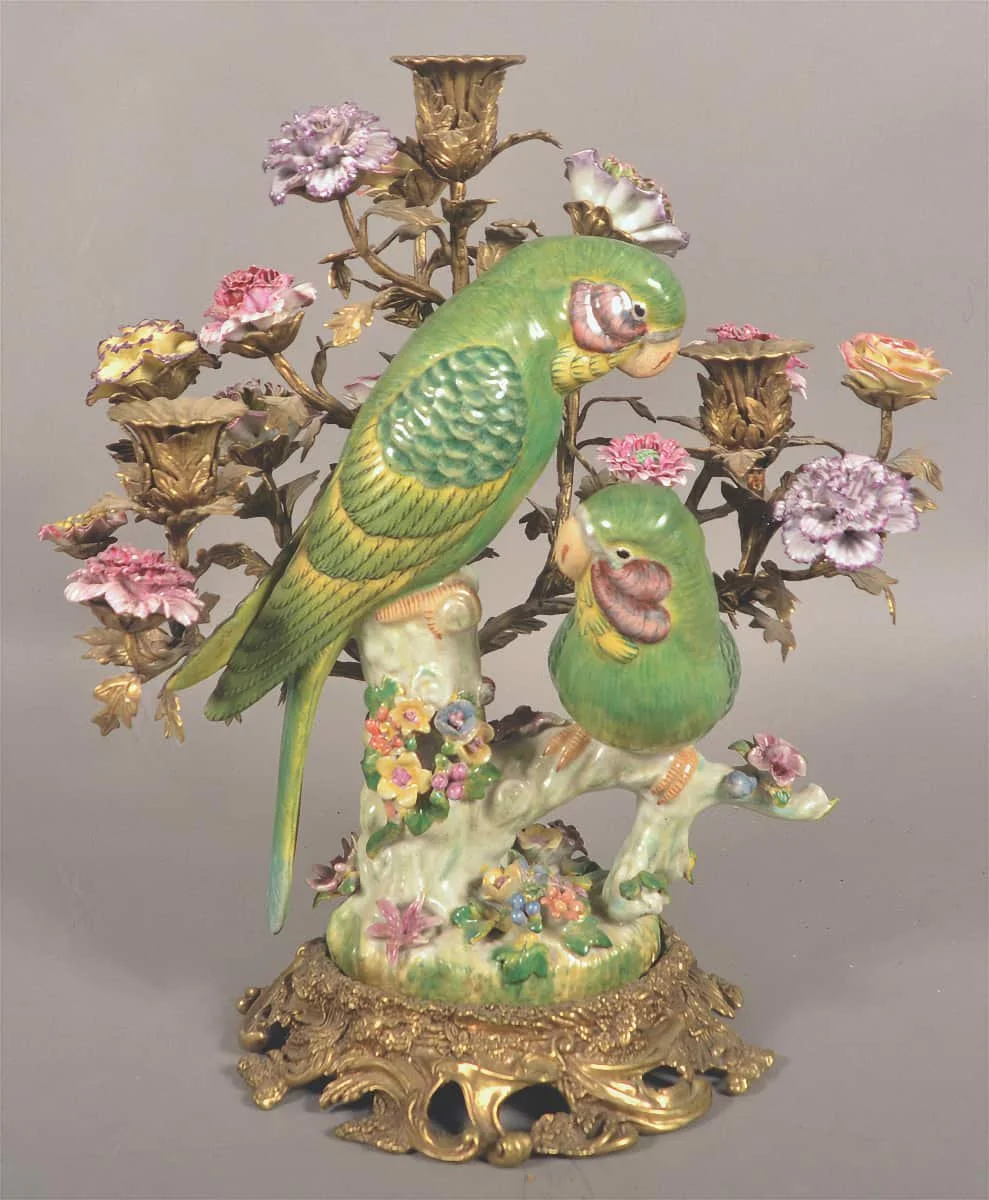Kovels Antiques & Collecting: Candelabrums
By Terry and Kim Kovel
Candelabrums
When new technology is invented, the devices replaced don't immediately disappear. This candelabrum is marked with “1887.” In 1782, Aime Argand patented a lamp that had a hollow wick and burned any fluid oil. New types of oil lamps and fuels to use with them, like whale oil, turpentine, kerosene and even lard, appeared throughout the 19th century.
This candelabrum's primary purpose is decoration, not illumination. By the time it was made, improved forms of lighting like oil lamps and electric lights were available. PHOTO CREDIT: Kovels.com
Thomas Edison invented the incandescent light bulb in 1879. Candles did not fall entirely out of use, of course; candlesticks and candelabra were still made and used as decorations, as they are today. Because they were more decorative than utilitarian, they became larger and more ornate.
The candelabrum pictured here is made of brass, like many early candlesticks. Like many later candlesticks, it features elaborate ornaments: leafy arms, a pierced scrolled base and, most eye-catching of all, a handpainted porcelain tree branch adorned with colorful three-dimensional flowers and two large perching green parrots. Its decorative value brought its price to $594 at a sale by Conestoga Auction Company.
* * *
Q: I have a 1956 Wurlitzer jukebox, Model 1900, that has never been refinished. It has high fidelity, original speakers and plays 200 45RPM records. It's in good working order. Can you tell me the value?
A: Wurlitzer was founded in 1856 in Cincinnati, Ohio, by Rudolph Wurlitzer. He was a recent immigrant from Germany and imported musical instruments from his family's business. Wurlitzer began making pianos in 1880. The first Wurlitzer jukeboxes were made in 1934. The Wurlitzer Centennial Model 1900 was made in 1955 and 1956 to celebrate the 100th birthday of the company. About 12,500 were made. Wurlitzer sold its jukebox brand to Deutsche Wurlitzer GmbH, a German subsidiary, in 1974 and that company continued to make Wurlitzer jukeboxes until 2013. If you want to sell your jukebox, see if a local store buys and sells them, check websites that sell jukeboxes or contact an auction that specializes in coin-operated machines. A Wurlitzer Model 1900 with 245 records sold for about $4,000 two years ago. However, we have seen a model with 200 records sell for as much as $8,000, so it's worth your while to do some additional research.
TIP: Worcestershire sauce is a good brass polish.
CURRENT PRICES
Kitchen, food mold, horseshoe shape, tin, 1800s, 11 x 2 1/2 inches, $65.
Bottle, flask, eagle and cornucopia, olive brown glass, sheared and tooled mouth, early 1800s, 6 5/8 inches, $275.
Furniture, pie safe, pine, six punched tin panels with stars in circles, long drawer, 1800s, 59 x 39 inches, $815.
Toy, train accessory, English market station, domed center, peaked ends, Marklin, Germany, 10 x 10 inches, $1,440.
For more collecting news, tips and resources, visit www.Kovels.com
(c) 2024 King Features Synd., Inc.

